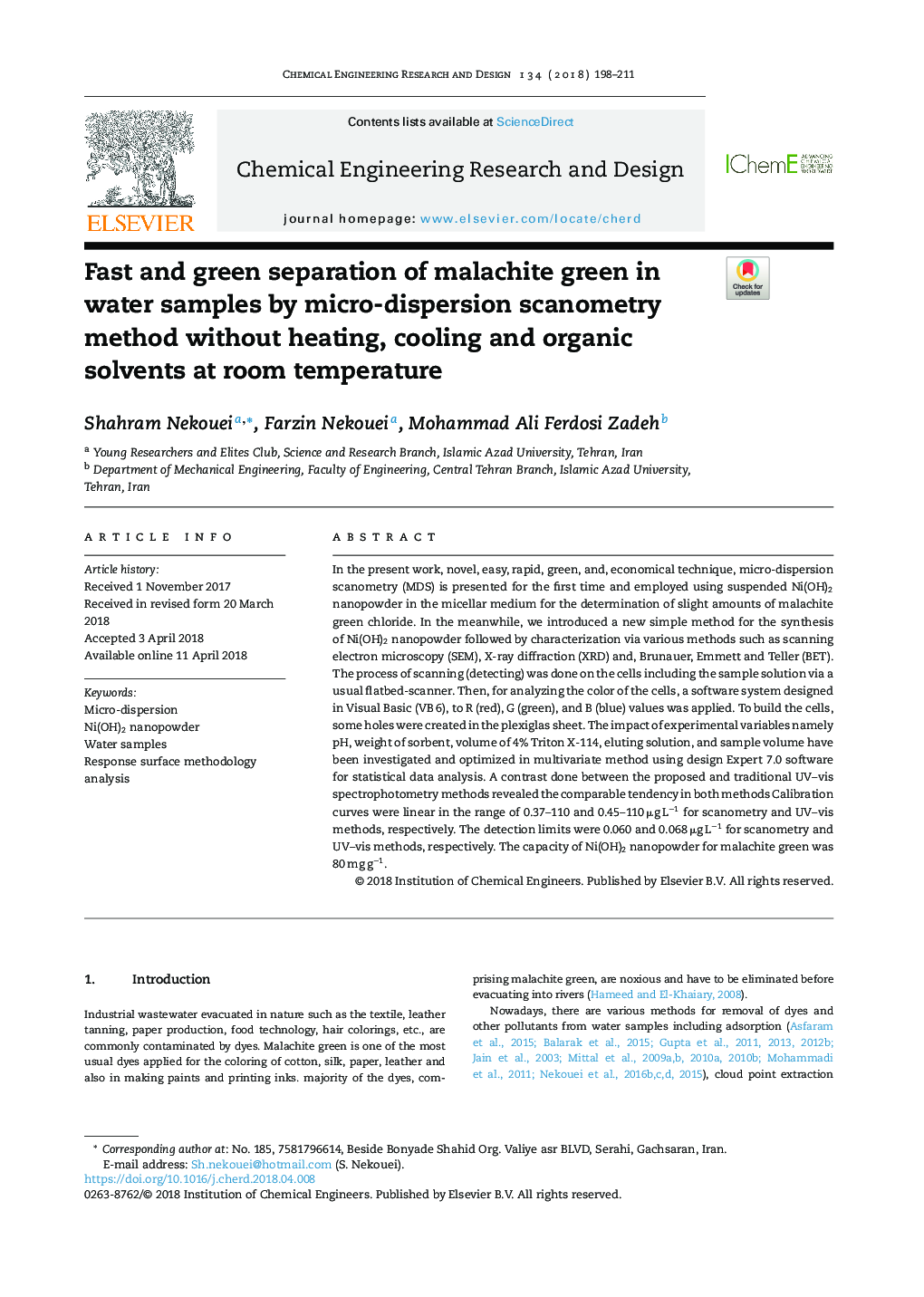| Article ID | Journal | Published Year | Pages | File Type |
|---|---|---|---|---|
| 7005821 | Chemical Engineering Research and Design | 2018 | 14 Pages |
Abstract
In the present work, novel, easy, rapid, green, and, economical technique, micro-dispersion scanometry (MDS) is presented for the first time and employed using suspended Ni(OH)2 nanopowder in the micellar medium for the determination of slight amounts of malachite green chloride. In the meanwhile, we introduced a new simple method for the synthesis of Ni(OH)2 nanopowder followed by characterization via various methods such as scanning electron microscopy (SEM), X-ray diffraction (XRD) and, Brunauer, Emmett and Teller (BET). The process of scanning (detecting) was done on the cells including the sample solution via a usual flatbed-scanner. Then, for analyzing the color of the cells, a software system designed in Visual Basic (VB 6), to R (red), G (green), and B (blue) values was applied. To build the cells, some holes were created in the plexiglas sheet. The impact of experimental variables namely pH, weight of sorbent, volume of 4% Triton X-114, eluting solution, and sample volume have been investigated and optimized in multivariate method using design Expert 7.0 software for statistical data analysis. A contrast done between the proposed and traditional UV-vis spectrophotometry methods revealed the comparable tendency in both methods Calibration curves were linear in the range of 0.37-110 and 0.45-110 μg Lâ1 for scanometry and UV-vis methods, respectively. The detection limits were 0.060 and 0.068 μg Lâ1 for scanometry and UV-vis methods, respectively. The capacity of Ni(OH)2 nanopowder for malachite green was 80 mg gâ1.
Keywords
Related Topics
Physical Sciences and Engineering
Chemical Engineering
Filtration and Separation
Authors
Shahram Nekouei, Farzin Nekouei, Mohammad Ali Ferdosi Zadeh,
